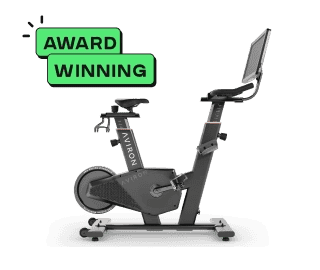Find the Best Form for Rowing Machines
The benefits of using a rowing machine are plentiful — from strengthening your core and improving your cardiovascular health to toning your arms and burning calories. But if you’re not using the rowing machine correctly, you won’t exactly be reaping these benefits. Like with most home gym equipment, using the proper form ensures that all the correct muscles are being targeted while preventing the risk of injury.
Rowing provides a great total-body workout, and has really surged in popularity over the past few years. This is likely from the impressive results that using your rowing machine on a regular basis can provide. Every time you take a seat on your rowing machine and start powering away, you’re targeting your glutes, hamstrings, biceps, back, and core muscles.
Even though rowing is considered a low-impact activity, if used incorrectly, you can cause damage to your wrists, lower back, and knees. And trust us, these sorts of injuries are not worth skimping on your rowing form. With plenty of practice combined with being mindful of your form while you use your rowing machine, you’ll be well on your way to safely toning your entire body.
If you’ve recently purchased a rowing machine or intend to add one to your exercise regimen in the future, check out these tips on finding the best form for using a rowing machine:
The Proper Technique When Rowing
Like with every machine at the rec center or your home gym, using the proper technique is absolutely crucial. This is even important when doing simple, body weight exercises like squats and lunges. Improper form can result in painful injuries that can cause discomfort for weeks and in the worst cases, even years.
The proper technique when rowing is composed of four stages: the catch, the drive, the finish, and the recovery. Each stage needs to be executed to the best of your ability so that you have a safe rowing session every time. If you find yourself getting tired towards the end of your workout, it might just be best to stop as this is when your technique can get a little sloppy.
The four rowing machine workout positions
“The Catch” – Rowing Position 1
Otherwise known as the “start” or “ready” position, this position’s name comes from the point at which when you’re rowing a boat, the oar’s blade would “catch” the water. For this position, you’re at the front of the machine, ready to give it all of your power and produce a forceful push through your feet. When in the catch position at the front of your rowing machine, it’s okay if your heels come up a little. Your back should always be tall and straight, the handle should be gripped tightly (but not too tightly) with your thumbs wrapped around, the handle should be in line with your shoulders, and arms should be straight. In terms of your upper body, your torso should be leaned in slightly, just ahead of your hips at an 11 o’clock angle (if you think of the arms on a clock). Once you’ve mastered a successful and strong catch position, you’re well on your way to excelling in the drive phase.
“The Drive” – Rowing Position 2
Now that you have a solid grasp on the catch position, it’s time for us to take a look at the drive phase. This phase is a transition from the catch position to the finish position. This rowing stroke has three primary mechanisms that produce the power needed to propel you to the back of the rowing machine. Here at the drive phase, your hips, legs, and arms should all be engaged, however, this position is leg dominant unless you’re really trying to sculpt your arms. Your legs should initiate the drive by extending, which pushes your upper body away from the front of your rowing machine. In terms of your upper body, once your hands on the handle bar have transitioned past your feet, your hips should start to swing back and move your torso from an 11 o’clock angle to a 1 o’clock angle. At the end of the drive sequence, your arms bend and handlebar should be pulled in towards your torso.
Don’t fret — even though this all sounds pretty complicated, it feels much more simple when you’re completing the movements on your rowing machine.
“The Finish” Rowing Position 3
Even though this position sounds like it should be the very last of the four, it’s not. When you wind up in the finish position, you should have firm, straight legs that are extended all the way. Your torso should now be leaning slightly backwards, which is a change from the slight forward lean you’ve had up until this point. Your shoulders should be relaxed and in a downwards position — it’s incredibly important that you keep your shoulders down in every position as raising them up towards your head can cause muscle strain or injury. As for your elbows, they should be near your body, not winged out like you're trying to fly nor uncomfortably jammed into your sides. In an ideal world, you should be able to fit a small piece of fruit or a tennis ball in between your side and elbows when in this position. And last but not least, your wrists and forearms should be parallel to the ground. And voila, you’ve done it…you’re in the finish position!
“The Recovery” Rowing Position 4
Simply put, the recovery phase is like your journey back to the front of the rowing machine. In the drive position, your legs go first, then your hips, and then your hands. But in the recovery position, your hands lead, then your hips, and then your legs. In this final position, your hands lead you back to the front of your machine with your torso at an 11 o’clock angle, legs bent, and back straight and tall. Once you’ve propelled yourself back to the front of the machine with as much control as possible, you repeat the whole process hundreds of times until you’ve worked up a solid sweat.
Even though the recovery position makes your body relax as you go back to the front of the machine, it’s important to keep your core engaged and a tall posture to avoid injury.
Common rowing mistakes and how to avoid them
Do not hunch your back
When you hunch your back on a rowing machine, you aren’t providing your muscles with the space they need, which means they won’t develop in the way you’d hope. Hunching forward and neglecting to sit up tall with a straight back will also put pressure and strain on your lower back. This can lead to a whole lot of discomfort and pain during your workout and afterwards. The easiest way to not hunch your back when using your rowing machine is by engaging your core muscles as this will keep your spine in a neutral position.
Also, be mindful of your shoulders. We carry a lot of stress and tension from our lives within our shoulder muscles, which makes it easy for them to pop up towards our ears when working out. Before hopping on your rowing machine, do a few arm circles and shoulder shrugs to relax them so that they stay down.
Trying to better your posture when you aren’t working out will give you a better form for those times you are working out.
Do not make a scooping movement
You aren’t on a canoe or digging up plants in your garden, so it’s best to ditch scooping movements when using your rowing machine. Many people accidentally move to the back of their machine with a scooping motion from their arms on the handle bar. When they do this, they might smack their knees with the handle bar. While this doesn’t sound like the end of the world, poor posture and form in one phase can have a domino effect and impact the movements you complete in other positions.
Your arms are raised too high to row properly.
When you reach the finish position, you absolutely do not need to wack yourself in the esophagus with the handlebar. Pulling the handlebar all the way up to your neck is using way more energy than required and can put unnecessary strain on your shoulders and upper back. Instead, just bring the handlebar (or oar) below your chest, using your upper back muscles to do so.
You allow your knees to drop to the side
If your knees are dropping outwards to the side when you’re on your rowing machine, you’re getting a little too comfortable. Even though it feels relaxing, you're missing out on engaging your hip flexors and inner thighs, which are two things we want to target during a rowing session. When rowing, your knees should be tucked in and gently touching, in line with your hips.
You’ve got a death grip on the oar
Save the white-knuckling for when you’re driving the car home from work on an incredibly rainy day. When you grip the handlebar or oar too tightly, you risk subjecting yourself to painful inner hand calluses and forearm tension. Try to only use three fingers from each hand to grip the oar and let your pinky fingers float with your thumbs resting on top of the oar. When you move backwards through the drive and finish phases, be sure to engage your upper back instead of your biceps and shoulders as this will alleviate some of the pressure you’re placing on your hands.
How To Row Properly - Final Thoughts
Until you get the hang of using your rowing machine with lots of practice, it’s key to think about every movement you make. This will ensure you avoid injury and getting in some bad rowing form habits that will be harder to break in the future.
If you’re worried that some of your muscles aren’t strong enough to maintain the proper posture on the rowing machine, try strengthening them off of the machine as well. On days when you aren’t planning on completing a rowing workout, spend some time doing squats, lunges, and planks.
Another important thing to consider is taking rest days. When you don’t give your body the opportunity to rest and recuperate in between workouts, your chances of injury increase. Tired muscles may not engage as they should, meaning that your posture and form takes a hit. Leaving one day in between rowing machine workouts can work wonders on your recovery and results but this doesn’t mean that you can’t move. Head outside for a leisurely walk or light hike as this will work wonders on your mental and physical health.
Like any other activity or hobby, using a rowing machine requires practice so don’t become discouraged if you’ve been doing it incorrectly. With a rowing machine in your home, practicing is convenient and a lot easier than driving to the gym every time you’re looking for a solid workout.
For more information on how to use a rowing machine and other helpful resources, check out our blog and website.


